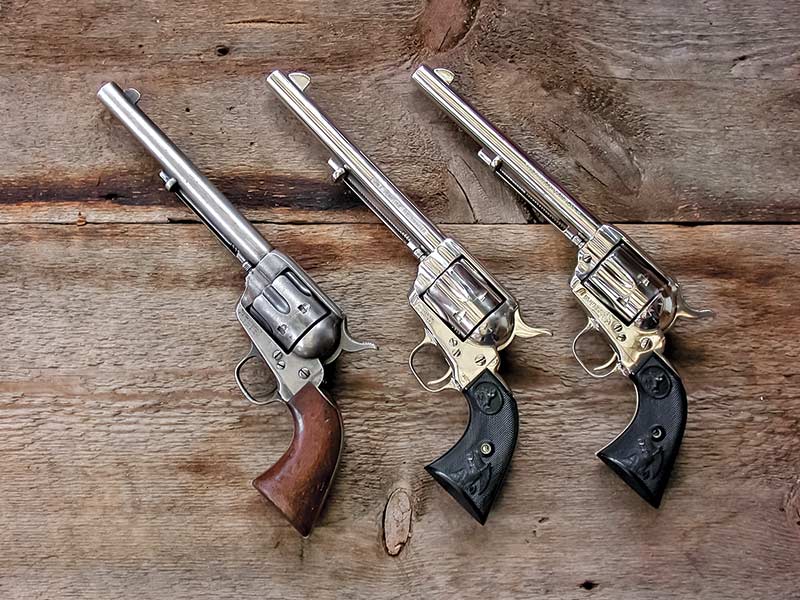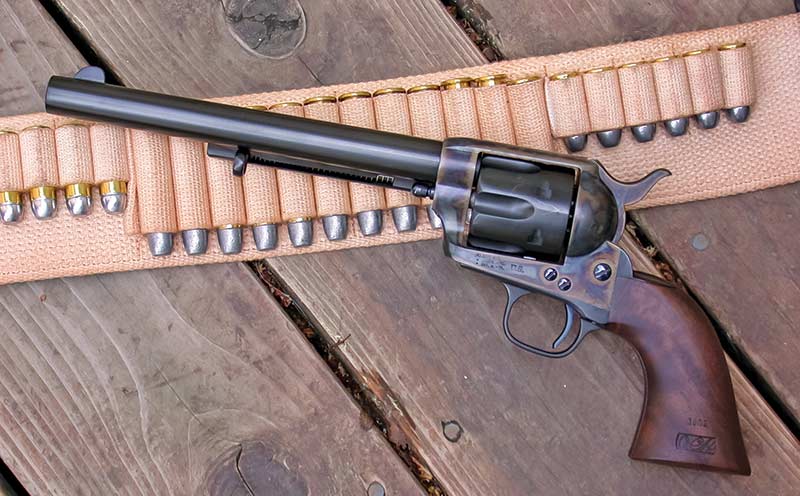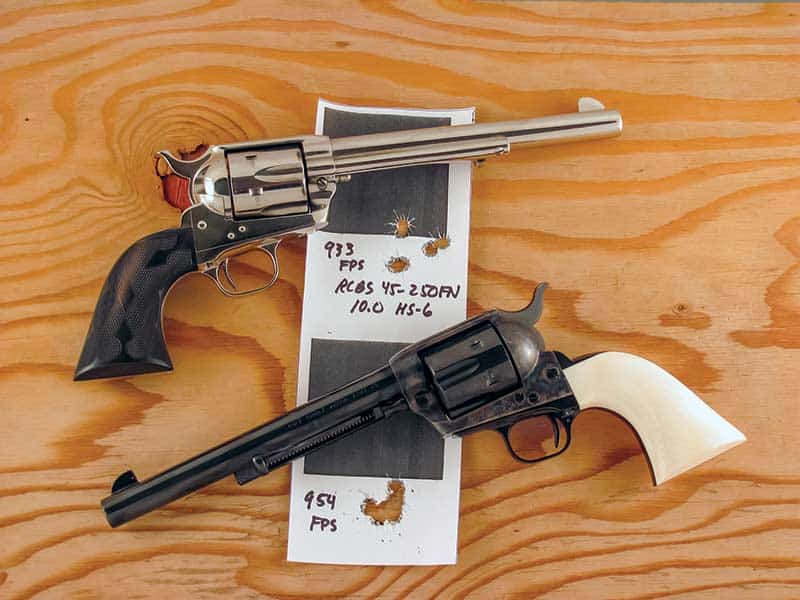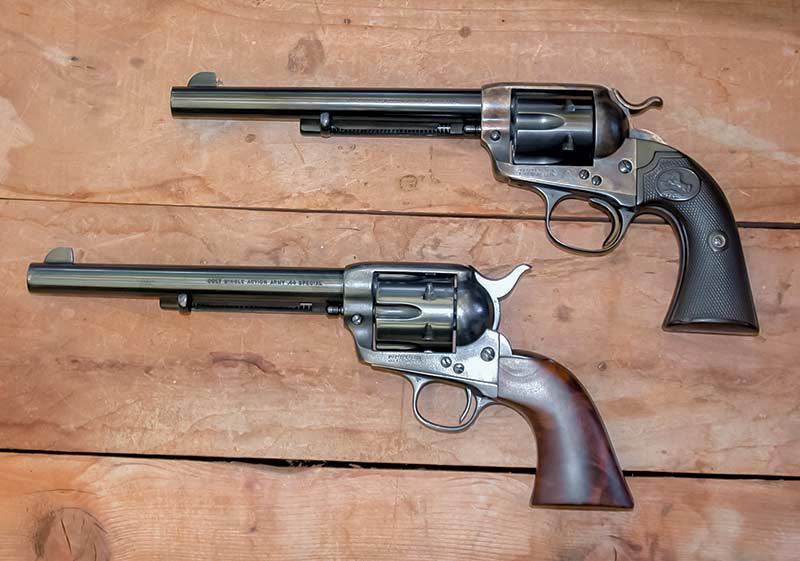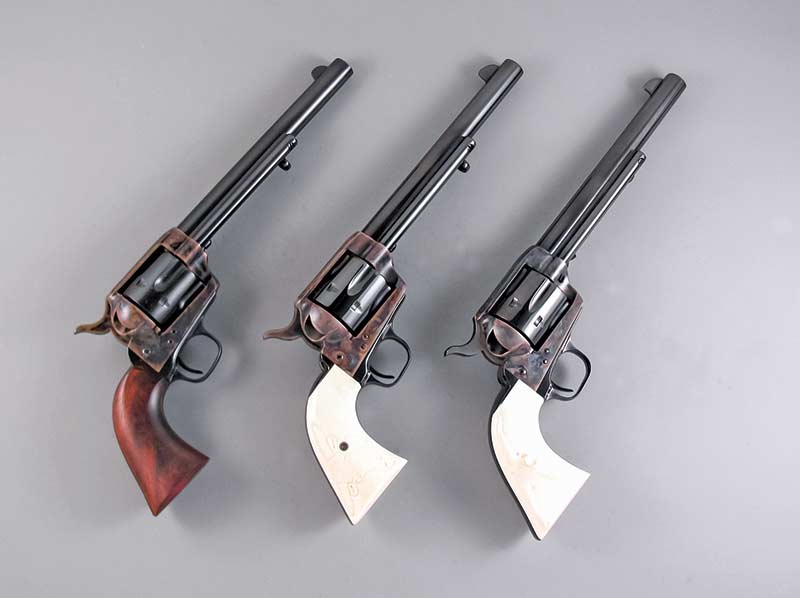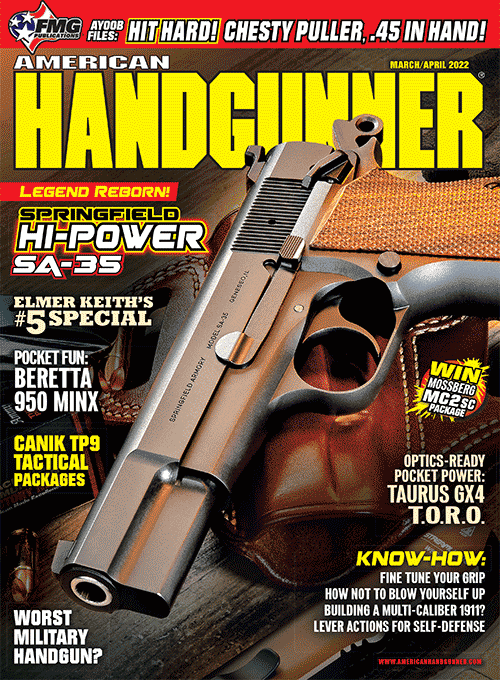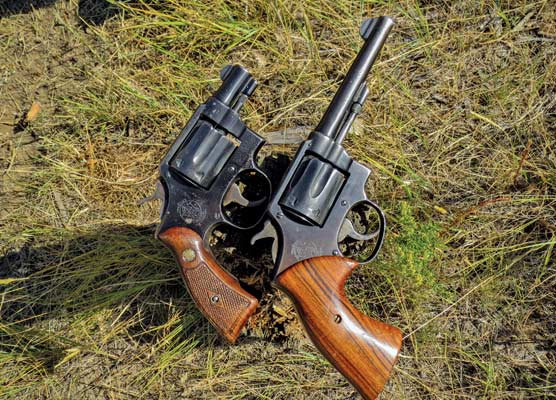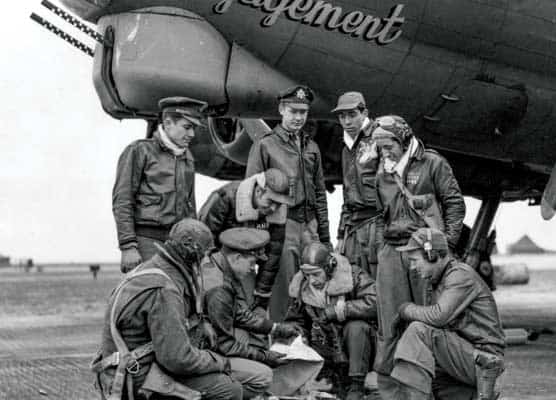Sixgunnin’ The 7-1/2" Colt Single Action Army
Call it fate, destiny or it just had to be. Whatever your choice, it was meant to happen. My favorite sixgun all these many decades has been a 71/2″ Single Action beginning with the legendary Colt Model P. I’m sure I was greatly influenced by the arrival of Gunsmoke while I was still in high school — Matt Dillon used a 71/2″ Colt. This certainly had something to do with my brand-new 71/2″ Colt Single Action .45 being the first to arrive in my area in late 1956. I used mine in Fast Draw with an Arvo Ojala Hollywood holster.
Over all these years, the Colt Single Action Army has been produced in what is now known as 1st, 2nd and 3rd Generations, so let’s take a look at how all that came to be. After the Civil War, Colt began converting their 1860 Army revolvers to cartridge firing by replacing the cylinders using both the Richards and Richards-Mason configuration. The military was about to call for testing to adopt a new revolver and to this end Colt produced their first big bore cartridge firing sixgun.
The 1871-72 Open-Top
This new Colt looked much like an 1860 Army with the same open-top frame construction, however, it had a cartridge cylinder, a loading gate, and an ejector rod. It also had the same grip frame as the 1860 Army. The chambering was .44 Colt using a bullet of approximately 210 grains at approximately 750 fps. However, the military board was not impressed. They did not like the open top frame and instead wanted a “top strap” design like that found on the Remington percussion revolvers of the period. They felt this would offer a significant increase in strength not only to make the sixgun more rugged but also to hold the cartridge they felt was necessary for future use by the military. They wanted a .45.
Drawing Board
Colt was sent back to the drawing board and William Mason redesigned the ’71-’72 Open-Top. The chambering was changed, the mainframe was changed, and the grip frame was changed. The new Colt incorporated the solid top strap of the Remington, the grip frame Sam Colt had first designed for his 1851 Navy .36 percussion revolver, and it chambered the new .45 Colt. This new .45 used a bullet of 250-255 grains for a muzzle velocity well over 850 fps. The barrel length of the 1860 Army had been 8″. The new Colt .45 had for me what is a perfectly balanced 71/2″ barrel.
From 1873 until 1940, the Colt Single Action Army was produced in over 30 chamberings with approximately half of the 357,000+ sixguns produced being .45 Colts and about half of the remaining were in .44 WCF and then followed the .38 WCF and .32 WCF. During the 20th century, Colt added the .44 Special and .357 Magnum. My experience with the 71/2″ 1st Generation Colt Single Action is confined to .45 Colt, .44-40 and .44 Special.
A Fortunate Find
About 20 years ago, I stumbled onto an old beater 71/2″ .45 Colt for the sum of $300. Upon careful inspection, as I turned it over in my hands and caught the light, I saw something on the frame. What caught my eye was “U.S.”; even though it was not in very good shape, it appeared I had an original Cavalry Model Colt made in 1881. There was no caliber marking on the barrel and it appeared to have a re-blue of sorts mixed in with a little bit of rust. It seemed to function okay, at least much better than it looked. The mainframe number itself was quite interesting as it was a “One of One Thousand” as the last three digits of the serial number were all zeros.
Larry Larsen, who specialized in restoring old Colts, was given the challenge of restoring this old Colt. The entire sixgun, except for the mainframe and hammer, which were re-case hardened, was properly and period-correctly re-blued and the necessary re-stamping was performed. When we were all finished, I had a U.S. Cavalry Colt as beautiful as it was the day in 1881 when it left the Hartford factory.
Bisley
A variation on the Colt Single Action Army is the Bisley Model. Over 8,000 Bisley Models were produced with just under 100 of them configured with target sights. The standard SAA grip frame was designed to roll in the hand, however, the Bisley Model was made more vertical to the bore axis and designed to ride up higher along the back strap. The front strap came up higher behind the triggerguard to allow the grip frame to really nestle into the shooting hand. The Bisley was also given what is now normally referred to as a target hammer for easier cocking and the trigger was made wider and also curved to fit the finger. My 71/2″ Bisley Model began life as a basically shot out .44 WCF with no finish left and extremely oversize cylinder mouths. It is now a 71/2″ .44 Special with a new barrel and cylinder and re-finished by Hamilton Bowen.
2nd Generation
In 1955, the 2nd Generation of Colt Single Actions began with the first chambering being .45 Colt followed by .38 Special, .357 Magnum and .44 Special. These ran from 1955 to 1975 with 2nd Generation serial numbers ending in “SA” to differentiate them from 1st Generation Single Actions. The 2nd Generation .45 Colt Single Action was virtually identical to the original guns except for some very minor changes such as serial numbers, barrel markings, and lack of inspector marks. Instead of carrying on the same serial number range that ended in 1940, Colt chose to use an “SA” suffix on the new guns and begin the serial numbers with 1002SA; they would go to just over 73000SA when production ended in 1975.
Still the same gun as the 1873 Peacemaker, the “new” Colt was made of stronger steels, and as far as quality the 2nd Generation guns, at least at the beginning, were as good, or better than anything from the 1st Generation production. My experience with 71/2″ 2nd Generation Colt Single Actions is confined to .45 Colt and .44 Special plus the only example produced in .44-40 was from the Peacemaker Centennial Commemorative set.
3rd Generation
By 1975, history began to repeat itself and the 2nd Generation machinery was worn out. The Colt Single Action was removed from production again. This time, however, it would not take 15 years to come back. Within a couple of years, Colt entered the 3rd Generation of Colt Single Action Army production, beginning at serial number 80000SA.The 3rd Generation Colt Single Action lasted into the late 1980s when the market was flooded with all types of variations as to finish and barrel length and often second-class examples before the production was to cease again — for the third time. But it was destined to return!
With the third resurrection, the Colt Single Action Army has followed a somewhat strange path being sometimes offered as a production gun and other times as a custom shop offering. The bad news is quality has been spotty. The great good news is my most current Colt Single Action Army, a 71/2″ .45 Colt from 2011, the 175th Anniversary of Colt, is of excellent quality with close attention paid to fit and finish with a deep blue on everything but the mainframe that has the breathtaking case-hardened colors Colt has long been known for.
My 71/2″ Colt Single Actions from the 3rd Generation run not only includes .45 Colt and .44 Special but also .44 WCF and .38 WCF, which are now known mostly as .44-40 and .38-40. Colt may have had some trouble with specifications in the early 3rd Generation sixguns, however, all of my later ones have uniform cylinders cut to the proper dimensions in .44 Special, .44-40 and .38-40. With the .45 Colt versions cylinders cut at 0.454″, they shoot well with either 0.452″ or 0.454″ cast bullets.
At one time, in addition to all those I have mentioned, they also offered the .32 WCF, or .32-20. I did manage to get one of these in a 51/2″ barrel length. It is an excellent shooter and I wish I had picked up a 71/2″ version while they were available.
Who knows what the future holds for the Colt Single Action Army? We do know history has proven it to be a survivor.

